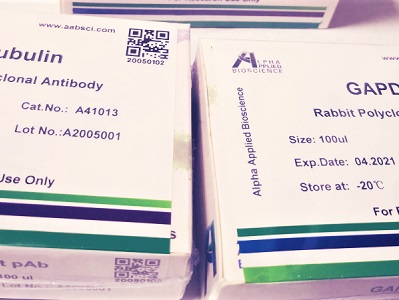

ERD21 rabbit pAb
Cat :A14197
-
Source
Rabbit
-
Applications
WB,ELISA
-
Reactivity
Human,Mouse,Rat
-
Dilution
WB 1:500-2000 ELISA 1:5000-20000
-
Storage
-20°C/1 year
-
Specificity
ERD21 Polyclonal Antibody detects endogenous levels of protein.
-
Source/Purification
The antibody was affinity-purified from rabbit antiserum by affinity-chromatography using epitope-specific immunogen.
-
Immunogen
Synthesized peptide derived from part region of human protein
-
Uniprot No
P24390
-
Form
Liquid in PBS containing 50% glycerol, and 0.02% sodium azide.
-
Clonality
Polyclonal
-
Isotype
IgG
-
Background
KDEL endoplasmic reticulum protein retention receptor 1(KDELR1) Homo sapiens Retention of resident soluble proteins in the lumen of the endoplasmic reticulum (ER) is achieved in both yeast and animal cells by their continual retrieval from the cis-Golgi, or a pre-Golgi compartment. Sorting of these proteins is dependent on a C-terminal tetrapeptide signal, usually lys-asp-glu-leu (KDEL) in animal cells, and his-asp-glu-leu (HDEL) in S. cerevisiae. This process is mediated by a receptor that recognizes, and binds the tetrapeptide-containing protein, and returns it to the ER. In yeast, the sorting receptor encoded by a single gene, ERD2, which is a seven-transmembrane protein. Unlike yeast, several human homologs of the ERD2 gene, constituting the KDEL receptor gene family, have been described. The protein encoded by this gene was the first member of the family to be identified, and it encodes a protein structurally and functionally similar to t
-
Other
KDELR1 ERD2.1, ER lumen protein retaining receptor 1 (KDEL endoplasmic reticulum protein retention receptor 1) (KDEL receptor 1) (Putative MAPK-activating protein PM23)
-
Concentration
1 mg/ml
| Product | Reactivity | Applications | Conjugation | Catalog | Images |
|---|
-
 400-836-3211
400-836-3211
-
 support@aabsci.com
support@aabsci.com
-
β-actin rabbit pAb ...... >
-
β-actin rabbit pAb(A284) ...... >
-
Plant-actin rabbit pAb ...... >
-
β-tubulin mouse mAb(M7) ...... >
-
GAPDH mouse mAb(2B8) ...... >
-
GAPDH mouse mAb(PT0325) ...... >
-
Histone H3 rabbit pAb ...... >
-
Histone H3 rabbit pAb ...... >
-
COX IV mouse mAb(6C8) ...... >
-
GFP-Tag mouse mAb(1G6) ...... >
-
HA-Tag mouse mAb(1B10) ...... >
-
mCherry-Tag mouse mAb(6B3) ...... >










 400-836-3211
400-836-3211
